Third Panel Complete
After a delay of nearly five months while I’ve been dealing with the astounding fallout of the Kickstarter fundraiser, I finally got back, right before Christmas, to my long-incomplete Endangered Poem Project. It provided all kinds of challenges I haven’t had to deal with for a while. The recent work has been large, in familiar endangered scripts, and in all kinds of exotic woods. This latest phase took me back to familiar wood but unfamiliar letters–what’s more, unfamiliar tiny letters. And all that sent me back to research, one of the driving forces of the project that I’ve neglected all these months. So here are photos of the panel; and in the next couple of days I’ll add an update on the scripts themselves, including thanks to the amazingly helpful people who did the translations for me, and the creation process, which as always has its own excitements and challenges.
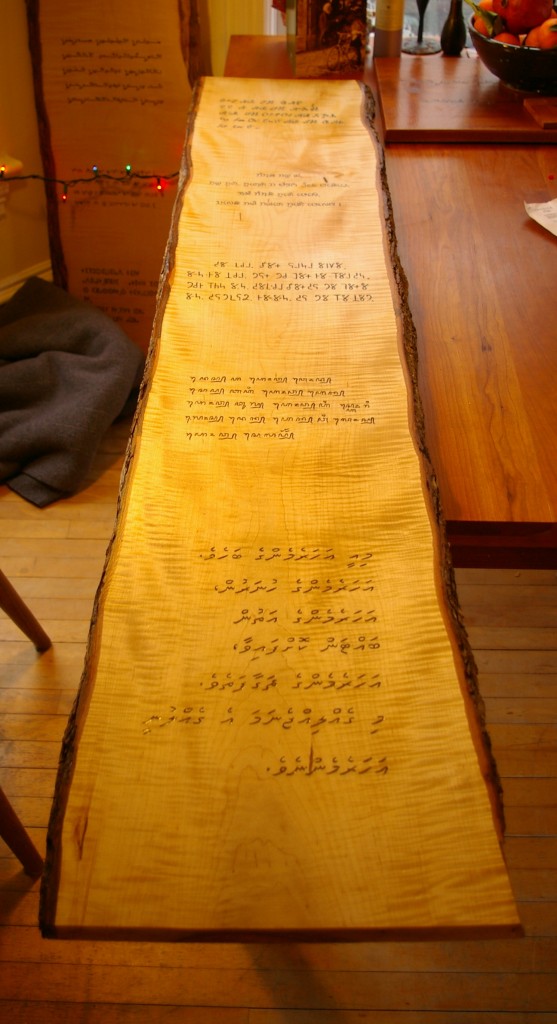
Okay, so let’s take a closer look at each of the five scripts….
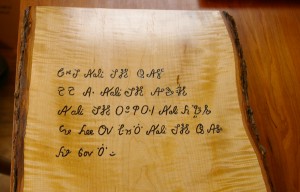
Credit to Piers Kelly for contacting me, introducing me to Eskayan (which, as with most of these scripts, I’d never heard of), then arranging for Maria Dano and Decena Nida Salingay to translate the poem from English and then Nida to write it out in the Eskayan script. Eskayan is spoken on the Philippine island of Bohol.
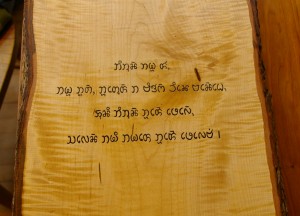
Credit here to Shantimoy Chakma, who met me in Dhaka and subsequently sent me the poem in both Chakma and (below) Mro, the unique scripts of the Chakma and Mro people of the Chittagong Hill Tracts in Bangladesh.
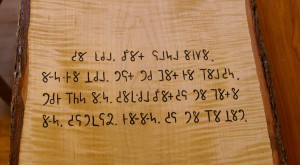
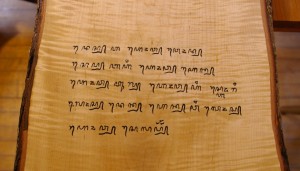
Javanese, or more properly Aksara Jawa, came to me via Nurbaini McKosky, with the actual translation being by Dr. Sastri S. Sweeney. As with all of these scripts, any mistakes are mine rather than theirs!
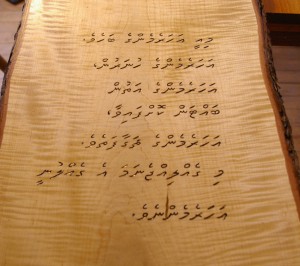
Thaana is the traditional script of the Maldives, and it appears here thanks to the contribution of Maryam Mariya. In a sense the script is not endangered, as it is the script in use by the roughly 300,000 inhabitants of the Maldives, but given that in the 1970s the president decreed that Latin script should be used in all official correspondence (a ruling subsequently overturned), it’s clearly vulnerable. I’ve also included it because it has all kinds of fascinating features, just one of which is that words are written from right to left, denoting the script’s Arabic roots, but numbers are written from left to right!

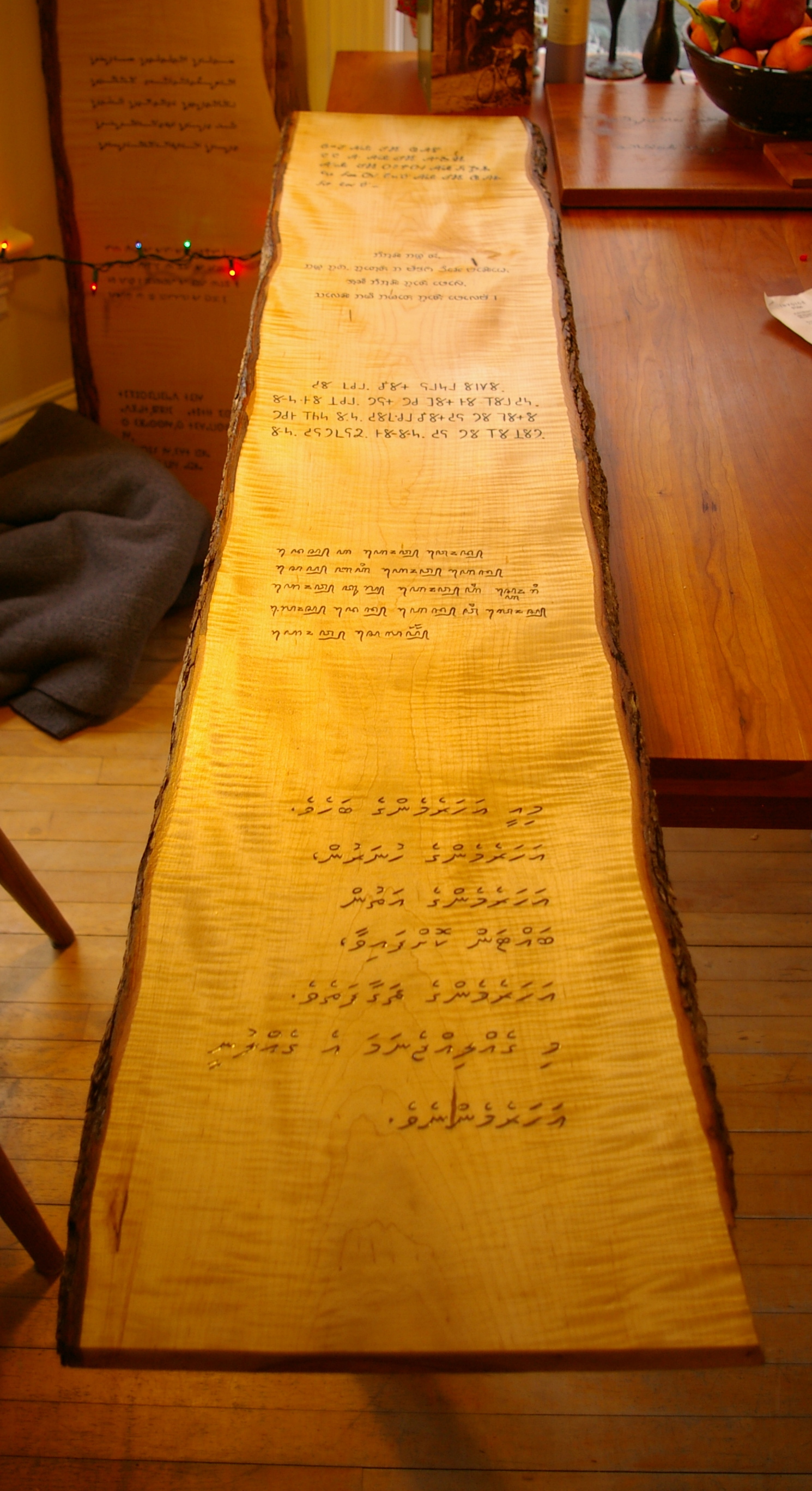
November 26, 2015 @ 3:09 pm
It’s possible that, like in Arabic, the Thaana numbers just seem to be written the opposite way as the words. A number like 2015 in Arabic is actually spoken as “five ten two-thousand”, so it looks like it is reversed when written in Arabic numbers.
November 26, 2015 @ 3:52 pm
What an interesting observation. Thanks so much. Now I need someone wiser than I to comment!